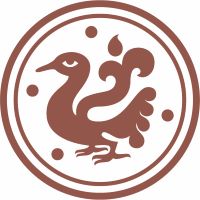Rama Beige sandstone
As a fully standing image, it would have appeared truly majestic had it not been broken from the thighs downwards. Since its arrival in Ahmedabad during the late 1970s, this badly broken image continued to be known as an unidentified deity until Lalit Kumar (former curator of Lalbhai Dalpatbhai Museum) explained that it could represent the image of Rama. The image is two armed, adorned with kirita mukuta (crown), carries a bow on the left arm (the upper end of which is visible) and a quiver with arrows visible over the right shoulder. The chhannavira ornament over the chest is significant as a symbol of solar deity. Unusually, the image carries yet another weapon, a small dagger tucked in on the right side of the waist. All these features suggest the connotations of a warrior prince in the forest. The absolutely simplified modeling inner energy and dignified grace makes it a characteristic example of Gupta classicism. This is one of the few Rama images of the Gupta period. The two Ramayaṇa reliefs of Gupta period (5th century) from Deogarh are housed in the National Museum, New Delhi. One of them narrates the episode of Rama releasing Ahalya from the curse of the sage Gautama. In both of the reliefs Rama is delineated with chhanavira on his chest.
Period:
6th century AD
Measurement:
96 cm(H) x 54 cm(W) x 24 cm(D)
Accession Number:
LDII.01114
Category:
Sculpture
Provenance or region:
Probably Deogarh Region, Madhya Pradesh



